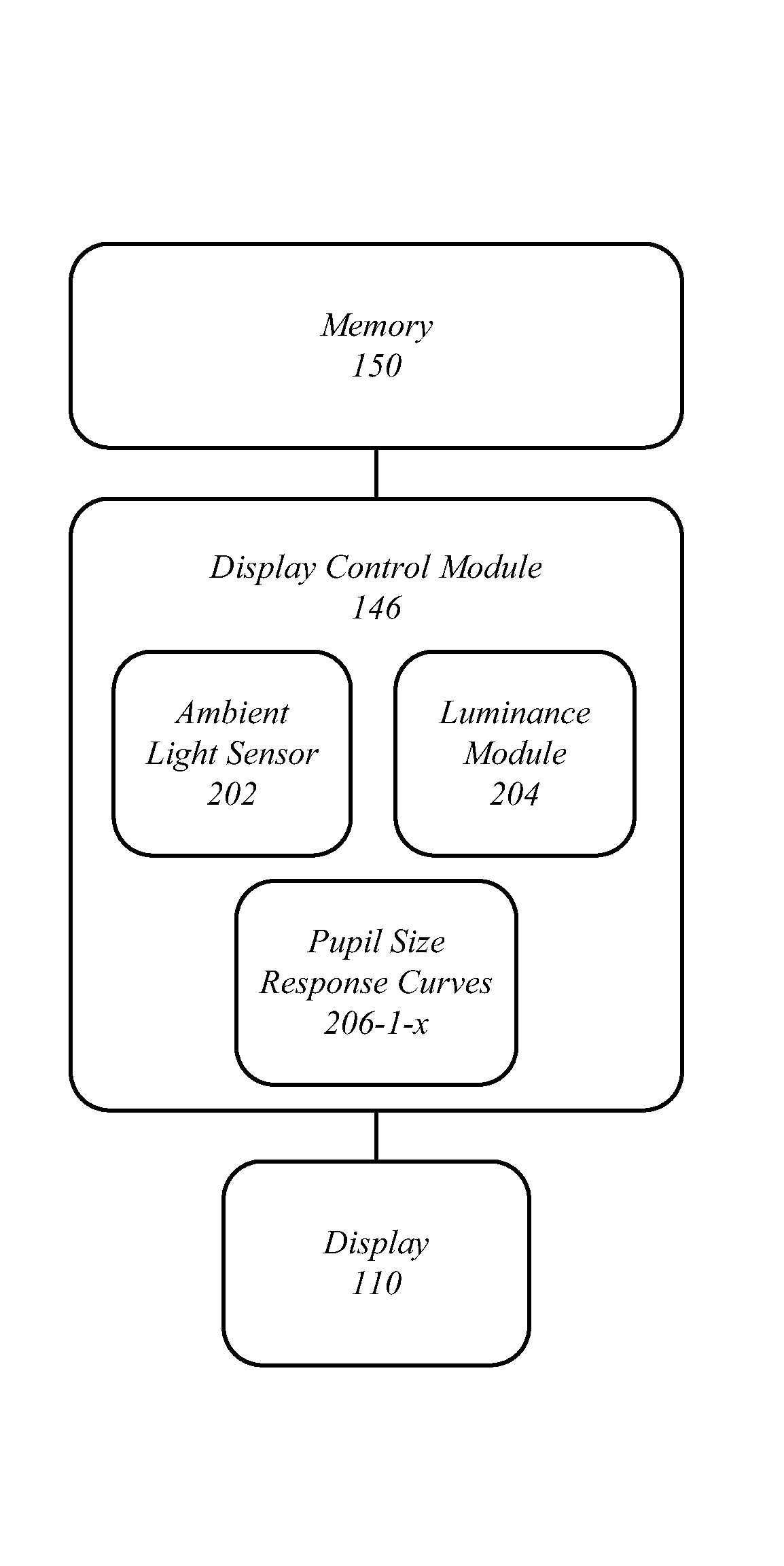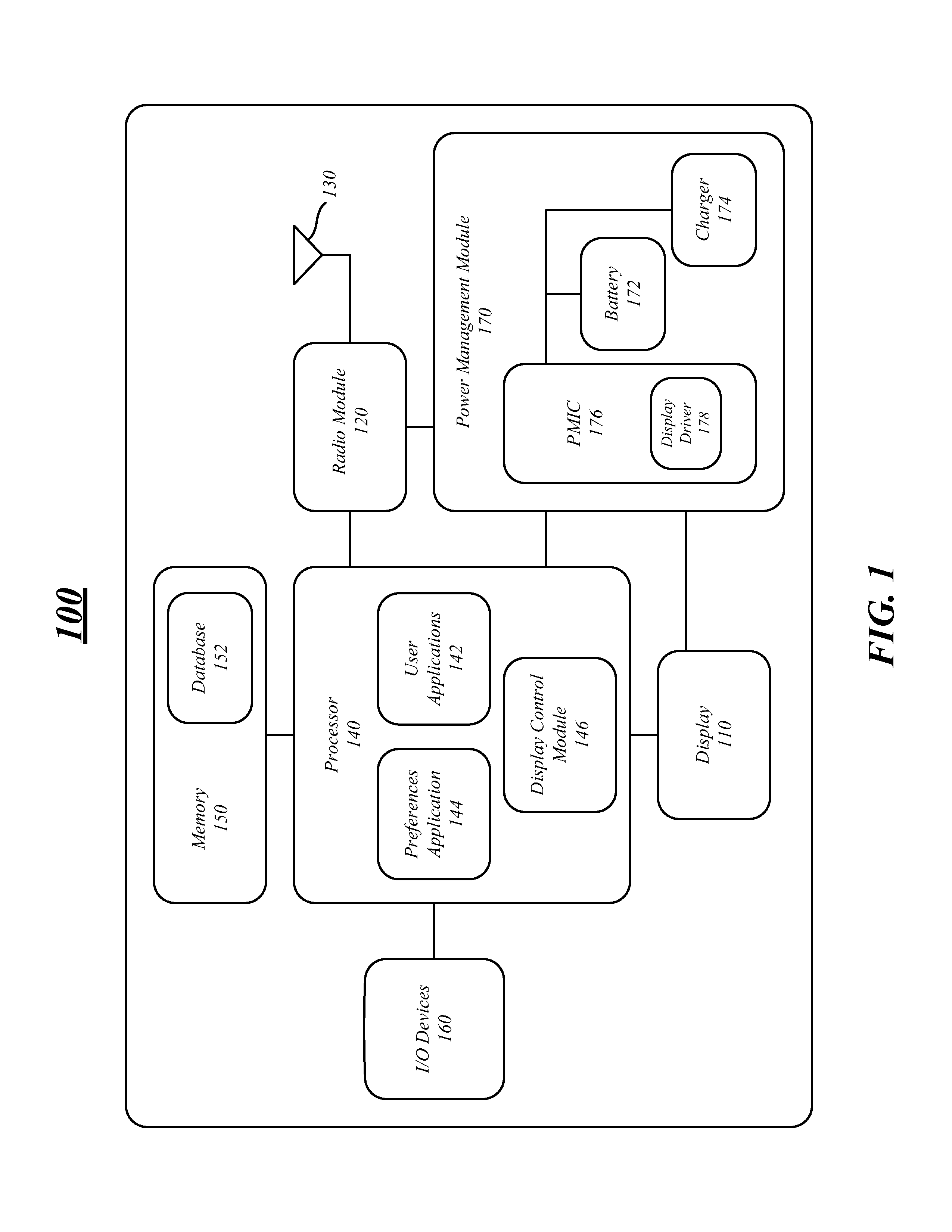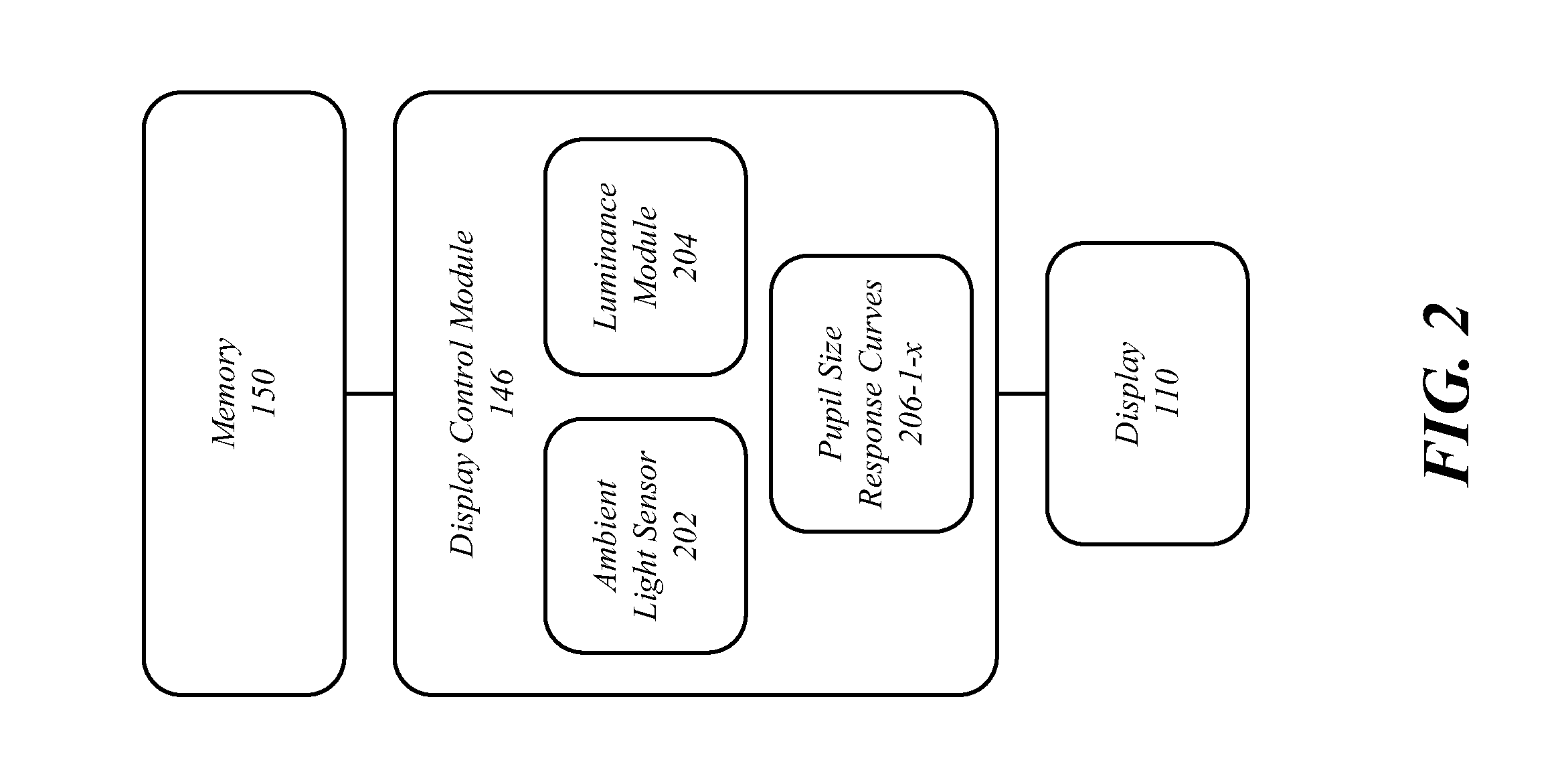Techniques for adaptive brightness control of a display
a technology of brightness control and display, applied in the field of display brightness control, can solve the problems of display to look too dim in a bright area and too bright in a dark area
- Summary
- Abstract
- Description
- Claims
- Application Information
AI Technical Summary
Benefits of technology
Problems solved by technology
Method used
Image
Examples
Embodiment Construction
[0008]Various embodiments are generally directed to adaptive brightness control techniques for electronic displays of a mobile computing device, such as a smart phone. Some embodiments are particularly directed to automatically and continuously modifying brightness levels for an electronic display based on ambient light levels and changes in pupil size of a human eye.
[0009]To enhance viewing experience, various embodiments implement an adaptive brightness control technique that calculates new brightness levels and varies a timed ramp between brightness levels in accordance with changes in pupil size for a human eye. A pupil generally changes in size according to various intensities of ambient light. This phenomenon is referred to as the pupillary light reflex. The pupillary light reflex causes pupil size to increase as ambient light levels decrease to allow more light to enter the eye. Conversely, the pupillary light reflex causes pupil size to decrease as ambient light levels incre...
PUM
 Login to View More
Login to View More Abstract
Description
Claims
Application Information
 Login to View More
Login to View More - R&D
- Intellectual Property
- Life Sciences
- Materials
- Tech Scout
- Unparalleled Data Quality
- Higher Quality Content
- 60% Fewer Hallucinations
Browse by: Latest US Patents, China's latest patents, Technical Efficacy Thesaurus, Application Domain, Technology Topic, Popular Technical Reports.
© 2025 PatSnap. All rights reserved.Legal|Privacy policy|Modern Slavery Act Transparency Statement|Sitemap|About US| Contact US: help@patsnap.com



